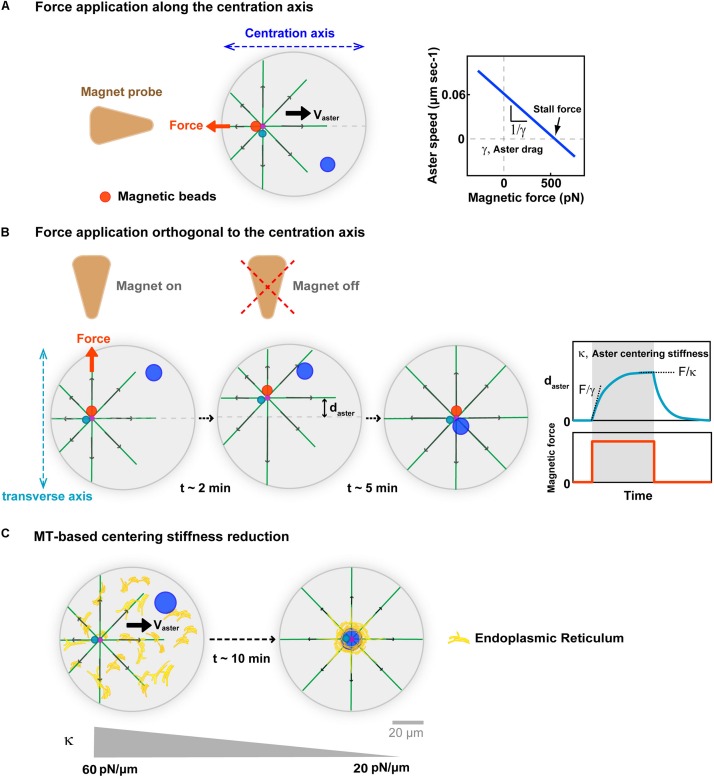FIGURE 3.
Implications of MT cytoplasmic forces for aster centration. (A) External calibrated magnetic forces applied with magnetic tweezers on the aster center, through minus-end accumulated beads in sea urchin embryos. Forces applied along the centering axis serve to derive force-velocity relationships for centering asters. This relationships is mostly linear supporting a motion limited by viscous interactions, with the slope allowing to compute an effective drag. The intersection of the line with the x-axis yields estimates of the aster endogenous force of ∼600 pN. Modified according to Tanimoto et al. (2018). (B) Forces applied orthogonal to the centering axis serve to characterize MT-based visco-elastic forces stabilizing the centered position of the aster in the transverse axis during centration. Blue curve: Typical experimental displacement-time curve, allowing to compute visco-elastic parameters of MT-based centering system. Upon force application, the aster moves toward the magnet until reaching an equilibrium plateau, and recoils back to the center after releasing the force, behaving as a spring. Computation of the centering stiffness and the drag from the plateau and the slope of the curve. Modified from Tanimoto et al. (2018). (C) Successive force measurements showed that aster centering stiffness becomes reduced during aster centration (Salle et al., 2019). Proposed model for how cytoplasmic forces may become less efficient during centration, and yield to this stiffness reduction: As the aster centers, dynein drags endomembranes to the cell center, depleting the rest of the cytoplasm, and thereby rendering cytoplasm force exertion less efficient. Modified from Terasaki and Jaffe (1991) and Salle et al. (2019).

